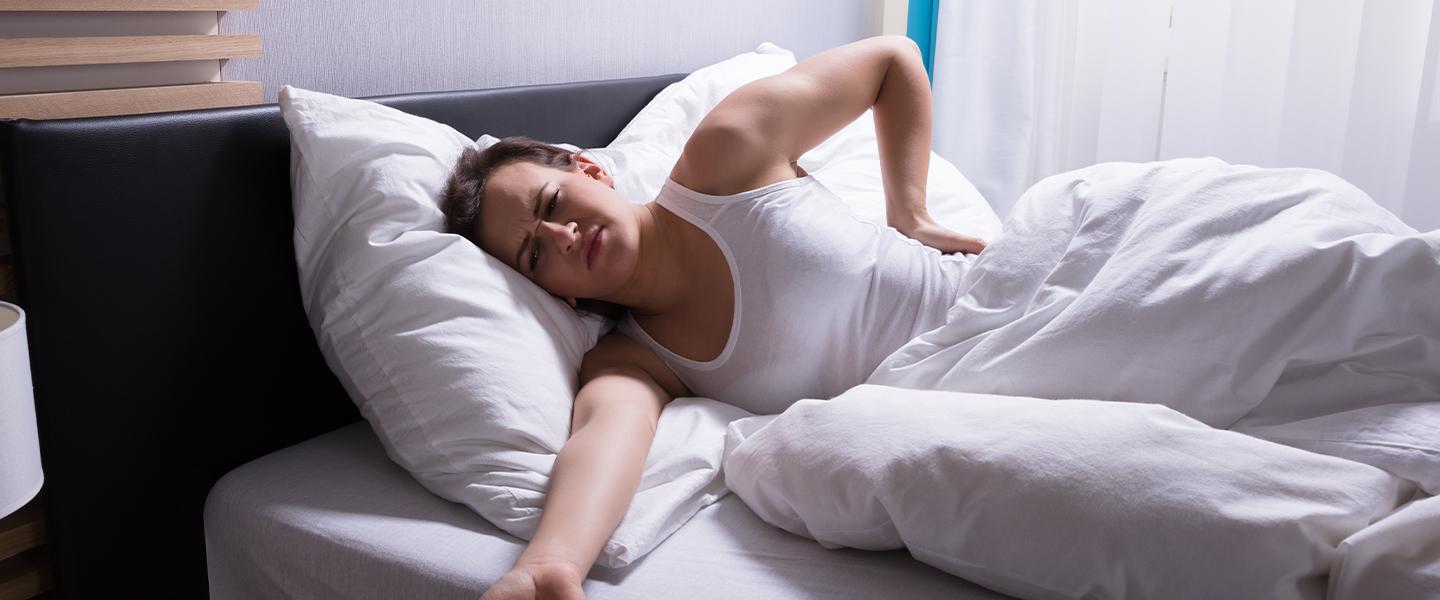What are the Best Sleeping Positions for Back Pain?
Anyone that has suffered from back pain will know just how debilitating it can be. From restless nights to difficulty with day-to-day activities, the things we take for granted suddenly become an uphill battle.
Disturbed sleep can lead to further health issues, so it is essential to take the necessary steps to safeguard your overall health and wellbeing. One way to do this is to think about your sleeping position. Good sleeping positions can make a big difference to back pain, which is why our guide below will help.
We will take you through the best sleeping positions for lower back pain, so you can explore your options and feel at your best.
What effects do different sleeping positions have on lower back pain?
Your sleeping position can have a significant impact on your back. Making sure you have good posture during the day when walking, working, and sitting is essential, but we often neglect how important it is when we go to bed and lie down.
A sleeping position that encourages good spinal alignment can help to combat back pain. Sleeping positions that are more contorted can put pressure on the wrong areas. Have you ever woken up feeling stiff and sore? This will probably be because of your sleeping position.
Most aches, pains, and stiffness fade away as the day goes on, but sometimes pain can persist and is exacerbated each night by the way you sleep.
A few small changes to your sleeping position can make a massive difference to this. That’s why we are going to be looking at different options for you to find the best sleeping position for lower back pain that suits your needs.
Best sleeping positions for back pain
There are many sleeping positions that different people will find more comfortable. Completely changing your sleeping position might be difficult for some, but slightly altering one or two aspects could be the difference between chronic lower back pain and a good night's sleep.
Remember, the best sleeping position for back pain for one person might not work as well for another - try a few of our ideas below and see what works best for you.
Side sleeping with a pillow between your knees
Side sleeping is the most common sleep position. With the most suitable pillows, it can be an excellent choice in terms of your general wellbeing.
Why this position helps
Sleeping with a pillow between your knees is a great sleeping position for back pain because it will help to align your pelvic area and hips. This relieves muscular and ligament stress and minimises the risk of twisting and irritating the sciatic nerve.
A good quality pillow under your head and one between your knees will also help align the spine, helping with blood circulation and issues like sleep apnoea.
Side sleeping in the foetal position
Some people might enjoy the safe and cosy feeling of sleeping in the foetal position, and in some cases, it can be good for your back.
Why this position helps
People with subluxations, herniated discs, or pinched nerves can benefit from sleeping in this position as it can relieve pressure. But, this is not recommended as a continual sleep position as it puts your spine out of alignment.
Sleep on your stomach with a pillow beneath your abdomen
Stomach sleeping is generally not advised as it can be challenging to find a position that aligns your spine.
Why this position helps
If you sleep in your front, one way to combat your lower back sinking and losing its alignment is by placing a supportive pillow under the abdomen and hips. You should use a thin pillow for the head to stop tipping it back.
Sleep on your back with a pillow beneath your knees
If you sleep on your back, it is recommended to raise your knees slightly by using a pillow.
Why this position helps
Elevating your knees will help maintain your spine's natural curve and reduce the stress placed on your lower back.
What to look for when purchasing a pillow
Buying pillows to suit your sleeping style will help to improve your sleep quality and reduce back pain and stiffness. But with so many different options on the market, it can be difficult choosing a new pillow.
Take a look at our guide below to help you find the best pillows for back pain that will suit your sleeping style.
Best for back sleepers
If you sleep on your back, you should look for medium support options of between three and five inches thick, and this should support your head and neck and maintain alignment with your spine.
Medium firmness is the best for back sleepers. You will have a good choice of materials and fillings, and this is often best left down to personal preference. Memory foam pillows are great for moulding into the user's head and neck shape but can get quite warm in the summer months.
Anti-allergy pillows are an excellent option for everyone, especially those who suffer from allergies. So as well as having a pillow that will support your sleeping position, you can rest easy knowing that these pillows are made with materials that won't cause you any allergies.
Shop Sleepseeker's pillows for back sleepers to find the perfect pillow for you.
Best for side sleepers
Side sleepers need good support at the right height to ensure spinal alignment. The advised pillow loft will differ depending on the size of the person in question, but generally speaking, a loft of between five to seven inches should be suitable.
Mid to firm support pillows are suitable for side sleepers as this will contour the head and neck and still provide enough support.
Sleepseeker offers a range of side sleeper pillows with various options, including a choice of fillings and firmness.
Best for stomach sleepers
If you sleep on your stomach, a thin, soft to medium pillow is advisable as this will help keep your neck at a suitable angle and won't tilt the head back.
Stomach sleepers won't need much loft to align their spine, and the pillow should be supportive enough to keep the head and neck in place and provide comfort with a good night's rest.
Find shallow pillows for front sleepers at Sleepseeker.
FAQs
Where should your pillow be placed when you sleep on your back?
Your pillow should support your head and neck in a position that will help with your spinal alignment. You can also place a small pillow beneath the back of your knees to slightly elevate them, reducing spinal stress and providing a better night's sleep.
Is it better to sleep with one or two pillows?
The number of pillows you sleep with will depend on their loft and firmness. Using two firm pillows with a high loft will tip your head too far forward, cause a stiff neck and back pain, and cause issues with your airway.
If you use two pillows and find that you suffer from a stiff neck or back pain, you might want to consider taking one away. You should use pillows to help support your head and neck and align your spine.
Can your mattress cause lower back pain?
Your mattress should support your body like your pillow supports your head and neck. A poor mattress will cause back pain as your body will not be supported, and your spine will be out of alignment.
Back sleepers should invest in a good medium to firm mattress to stop different body parts from sinking further in than others. This can cause an over-flexion of your spine, and the bed should be able to support your shoulders, lower back, and hips.
Side sleepers will benefit from a medium to soft or medium to firm mattress to support the body. Using a pillow between the knees can help align your pelvic area and hips and reduce stress on muscles and tendons. This can also help to ensure your spine remains aligned.
Front sleepers will benefit from medium-firm to firm mattresses as this will help support the body and stop your body from sinking in and arching your spine. A relatively firm mattress and a thin pillow should help keep your spine aligned while you sleep.
There are many different kinds of mattresses to choose from, but you will always be able to invest in mattress toppers to add another level of protection and comfort to your mattress. Hypoallergenic mattress toppers are also available for allergy sufferers.
What pillow types are best for side sleepers?
Side sleepers require a relatively firm pillow with a high loft to support the head and neck and align the spine. Materials like memory foam and hollowfibre pillows all provide comfortable support that will suit a side sleeper.
Discover the right bedding for you
Back and neck pain are no laughing matter. If you are suffering and require pain relief and advice, it is always best to speak to your doctor.
It is likely your sleep position is causing at least some of the discomfort. Hence, finding a comfortable sleeping position that promotes proper spinal alignment is essential. A good quality pillow and mattress will help, and depending on your preferred sleeping style, putting a pillow underneath your knees can also make a difference.
It might take a few nights to get used to any changes you make, but you should start to see a reduction in stiffness and back and neck pain when you wake in the morning.
At Sleepseeker, we offer a wide range of bedding to suit all sleeping positions from duvets and pillows to warming electric blankets.
Read some of our other guides for more sleep advice:
What's trending now...
-
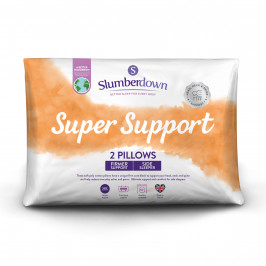
Slumberdown Super Support Firm Support Side Sleeper Pillow, 2 Pack
£17.00
Shop Now -

Slumberdown All Seasons Combi 15 Tog (10.5 + 4.5 Tog) Double Duvet
£30.50
Shop Now -
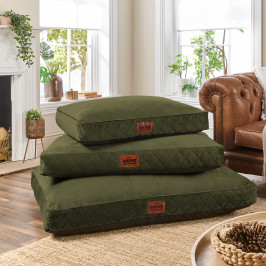
Slumberdown Paws for Slumber Olive Green Pet bed, Medium
£39.00
Shop Now -

Slumberdown Wonderful Wool Mattress Topper, King
£60.00
Shop Now -

Slumberdown Paws for Slumber Extra Large Pet Bed Spare Cover, Grey
£20.00
Shop Now -
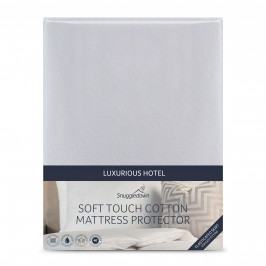
Snuggledown Luxurious Hotel Cotton Waterproof Mattress Protector, Double
£23.50
Shop Now -
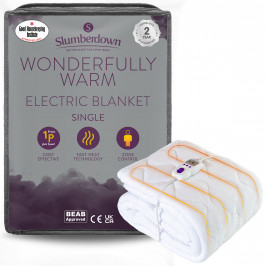
Slumberdown Wonderfully Warm Electric Blanket - Single
£60.00
Shop Now -

Slumberdown Teflon Pillow Protector - Pack of 2
£14.00
Shop Now -

Slumberdown Unwind Outside 2-in-1 Waterproof Cocoon Set, Burnt Orange
£30.00
Shop Now -
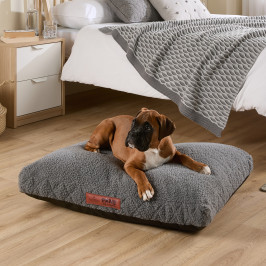
Slumberdown Paws For Slumber Sherpa Pet Bed, Medium
From: £25.00
Shop Now -
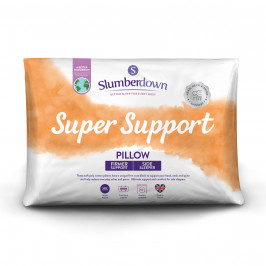
Slumberdown Super Support Firm Support Side Sleeper Pillow
From: £17.00
Shop Now -

Slumberdown All Seasons Combi Duvet
From: £25.50
Shop Now -
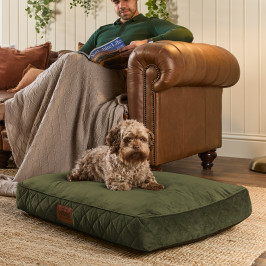
Slumberdown Paws for Slumber Medium Pet Bed
From: £39.00
Shop Now -

Slumberdown Wonderful Wool Mattress Topper
From: £54.50
Shop Now -

Slumberdown Paws for Slumber Extra Large Pet Bed Spare Cover
From: £20.00
Shop Now -
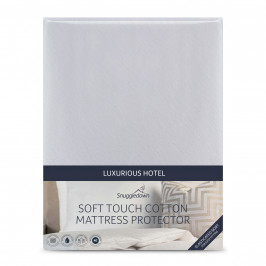
Snuggledown Luxurious Hotel Cotton Waterproof Mattress Protector
From: £19.50
Shop Now -
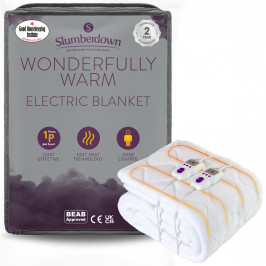
Slumberdown Wonderfully Warm Electric Blanket
From: £60.00
Shop Now -

Slumberdown Unwind Outside 2-in-1 Waterproof Cocoon Set
From: £30.00
Shop Now -
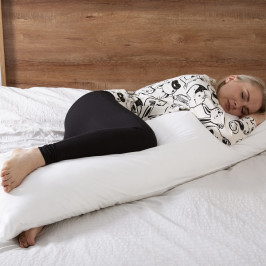
Slumberdown Body Support Pillow, 1 Pack, Includes 100% Cotton Pillow Case
£20.00
Shop Now -

Slumberdown All Seasons Combi 15 Tog (10.5 + 4.5 Tog) King Size Duvet
£34.00
Shop Now -
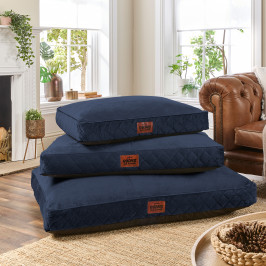
Slumberdown Paws for Slumber Navy Pet Bed, Large
£49.00
Shop Now


